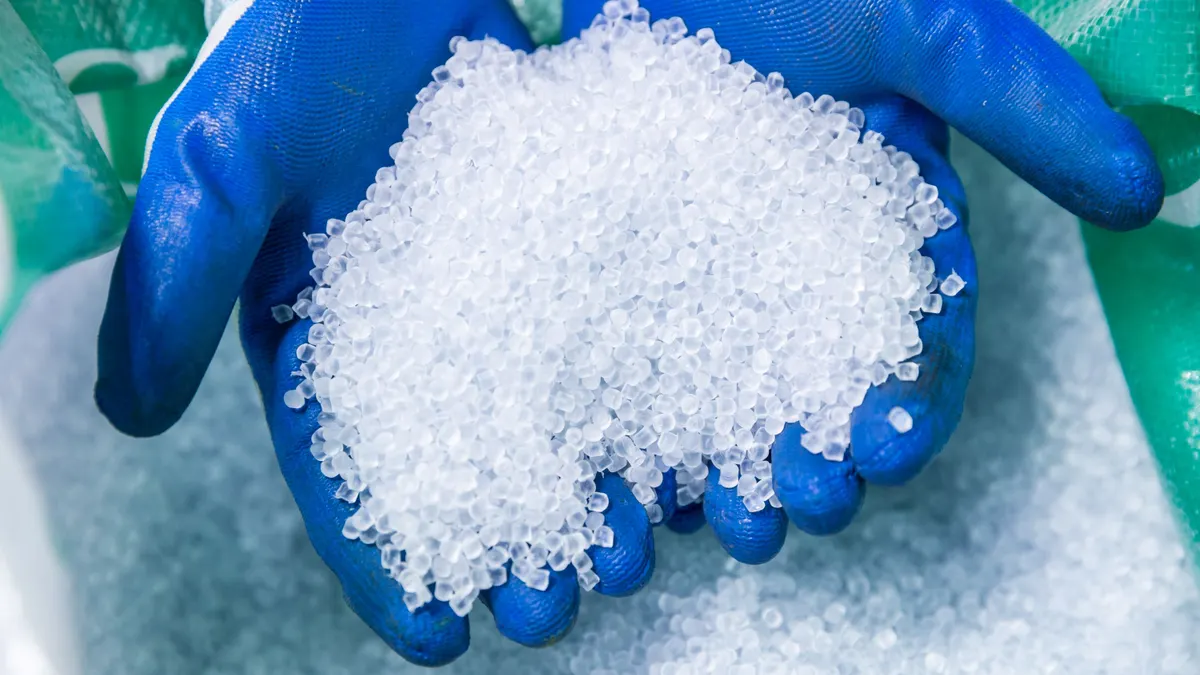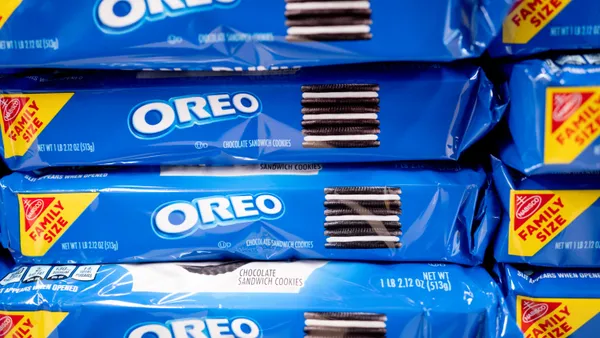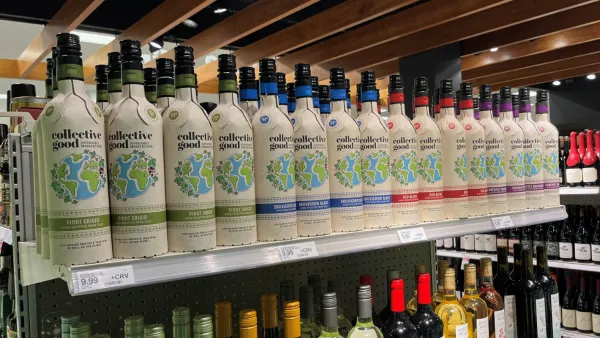Dive Brief:
- Consumer packaged goods companies more than doubled the recycled content in their plastic packaging in recent years, from approximately 5% to 13% between 2018 and 2023 by one analysis, with recycled PET, HDPE and LDPE seeing some of the biggest gains. But PCR goals for 2025 that were set five to 10 years ago are not likely to be met by year’s end, Ameripen concluded in a report published last week analyzing a collection of CPGs.
- CPGs still face significant uncertainty as they navigate recycled content goals, the report explained. It’s not clear how state and federal entities might regulate recycled material in the future, including for food-contact applications, or whether they’ll count methods like chemical recycling to help reach those targets.
- The study also assessed how recycled content legislation could impact PCR supply and demand for use in packaging. At the state level, PCR requirements are showing up in tailored recycled content laws as well as within EPR policies. “We believe that CPGs prefer the incentive-based approach over mandates to allow flexibility,” the report states.
Dive Insight:
Ameripen’s project, funded by the Plastics Industry Association’s Recycling is Real initiative and completed with the help of consulting firm Circular Matters, looked at postconsumer recycled content goals set by companies, trade associations or states across plastic, paper and metals. It compared these goals with available material supply and recycling capacity across the United States.
Ameripen previously conducted a recycled content study in 2021 that solely looked at plastics and assessed 35 CPGs. This year’s edition looked at 46 CPGs. Additionally, the new report analyzed recent recycled content data from trade associations; the industrywide average PCR levels in packaging were 44% in paper packaging, 43% for aluminum cans, 18% for PET packaging and 8% for HDPE. The rate was less than 1% for LDPE, PP, PS and other plastic packaging.
“While the recycling capacity to supply PCR to meet the goals quantified in this report is expanding, additional capacity is needed for all plastic resins except for HDPE and LDPE, and especially for PET,” the report states.
One key difference between voluntary corporate goals and state mandates is that CPGs tend to set goals based on an “average” recycled content percentage across all of their plastic packaging usage, whereas states might set mandates by resin type or packaging format.
States are legislating across material types. “In order to appear fair, PCR goals are not only being considered for plastics, but for all materials in the EPR laws and regulations,” the report says. “What remains to be seen is if PCR targets will be set based on materials specific needs assessments that identify where additional PCR demand is truly needed.”
Ameripen expects PCR demand will only increase, and more goals will be announced. When thinking about setting smarter PCR goals going forward, it’s important to note that there’s a disconnect between PCR goals – both voluntary and those that are mandated by legislation – and reality, said Rob Keith, Ameripen’s membership and policy director, in an email.
“Goal demand and actual PCR use have not developed at an equal pace, highlighting infrastructure and supply chain shortfalls, especially in plastics,” he said. “Laws and regulations are often put together on the assumption that enough recycled content is available.” This points to the need for industry feedback on proposed legislation as well as the need for end market development to be an essential part of any new law, he said.
The report notes that CPGs “have a high degree of uncertainty whether advanced recycling PCR will be allowed to count in recently enacted and future state legislation.” Currently, recycled plastic produced via chemical recycling accounts for a very small proportion of plastic PCR used, and it is not widely available in the U.S., “especially at the scale needed to contribute significantly toward meeting voluntary goals and legislative mandates.”
While Ameripen doesn’t have a formal policy regarding chemical, recycling, it acknowledges that such technologies might be necessary to reach goals, particularly with PCR mandates. Ameripen agrees that “no technology should be banned arbitrarily,” Keith said.















